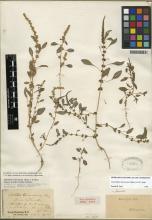Training programs focusing on biodiversity and biological research at UBC Science have received major funding from the Natural Sciences and Engineering Research Council (NSERC).
In total, researchers at UBC received $4.95 million over six years from NSERC's new Collaborative Research and Training Experience (CREATE) program.
"UBC's success in this first round of CREATE awards is encouraging, and perhaps reflects previous successes in infrastructure competitions," says Don Brooks, associate vice president research at UBC.
"We have a very strong community of graduate students and postdoctoral fellows who actively seek opportunities to collaborate with colleagues in other disciplines. We're grateful to NSERC for providing this opportunity to the next generation of researchers."
Three of the 20 programs funded across Canada in this round of the competition are based at UBC--two of those are within the faculty of Science. They are:
BRITE: Training the Next Generation of Biodiversity Researchers
Global climate change, habitat loss and associated extinctions have made it more and more important to understand the factors that generate and maintain biodiversity—the planet’s spectrum of biological diversity. The Biodiversity Research: Integrative Training and Education program-led by UBC Professor Sarah Otto-is designed to produce a generation of scientists able to integrate diverse approaches to understand and alleviate the loss of species diversity. The training program-housed at UBC’s Biodiversity Research Centre-will include lab rotations, international collaboration and internships, better equipping trainees to assess species and ecosystems at risk, affect policy, and develop recovery plans.
Training on High-Throughput Technologies in Biological Research
Biological research is being transformed by new tools and approaches that rapidly, and deeply, analyze large numbers of DNA, protein and cell samples. A multidisciplinary training program based in the Centre for High-throughput Biology and led by UBC Canada Research Chair Stephen Withers will bring together students in engineering, chemistry, physics and biology to both develop and exploit state-of-the-art instrumentation in mass spectrometry, next-generation sequencing, robotic sample handling and nanofabrication.
In addition, a project led by UBC Prof. Brian Ellis will work with an interdisciplinary group of plant biologists to unravel the intricate mechanisms by which plants turn photosynthetic products into cell wall structures
NSERC is a federal agency that supports some 26,500 university students and postdoctoral fellows in their advanced studies.
Launched in 2008, CREATE targets interdisciplinary research within the natural sciences and engineering, in areas such as nanotechnology, aquaculture, biomedical engineering and biodiversity. Across Canada, NSERC announced $32 million in grants from the program in 2009.


